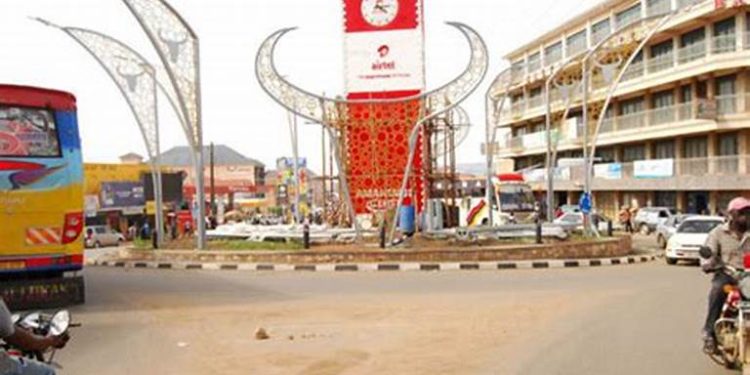The recent HIV/AIDS report from the Uganda Aids Commission (UAC) reveals a horrifying picture for the Ankole Sub-region. The prevalence of the disease in most districts surpasses the national average of 5.1 percent. Mbarara tops the list with a disgraceful 14 percent, followed by Kiruhura (9.5 percent), Bushenyi (9.2 percent), Mbarara City (8.1 percent), and Ibanda at 7.3 percent. Even districts like Mitooma (4.7 percent), Buhweju (3.8 percent), and Isingiro (3.1 percent) are part of this appalling trend.
The sheer negligence and indifference from both residents and leaders in these districts are beyond comprehension. Richard Owomugasho, the chairperson of Rwampara District, bluntly attributes the high rates to the reckless lifestyles of the populace. “People are not bothered about their lives,” he declares, highlighting how prostitution thrives in areas like Nyeihanga due to the influx of truck drivers. This careless attitude towards life and health is nothing short of a societal death sentence.
Mr. Didas Tabaaro, Mbarara District chairperson, brings up another grotesque issue: stigma. Stigma surrounding HIV/AIDS not only prevents individuals from seeking treatment but also fosters a culture of silence and denial. This is exemplified by the death of one of his district workers, who succumbed to the disease due to the paralyzing fear of social ostracism. Mr. Tabaaro’s attempt to undermine the statistics by questioning their accuracy is a blatant act of deflection and denial that does nothing but perpetuate the problem.
The dire situation in Mbarara is mirrored in other parts of the sub-region. Lauben Tumwine, the chairperson of Rubaya Sub-county, paints a distressing picture of young girls frequenting bars and engaging with multiple men. This scenario, where young women trade their bodies for a semblance of a better life, is not just a health crisis but a damning indictment of societal failure. It underscores a lack of meaningful opportunities and the erosion of moral and ethical standards.
Dr. Julius Bamwine, the health officer for Ibanda District, corroborates this by attributing the rise in HIV cases to prostitution, particularly among young women who migrate to urban areas in search of work. The fact that bar owners exploit these vulnerable individuals to attract clientele is a grotesque manifestation of predatory capitalism and moral decay. His observations about the youth’s reluctance to adhere to HIV medication regimes highlight a fatalistic mindset and a systemic failure in public health education.
The situation is exacerbated by the abysmal levels of comprehensive knowledge about HIV/AIDS among young people, as noted by Joyce Tibaijuka, coordinator of people living with HIV in Mbarara City. Despite investments in prevention and treatment, the high illiteracy levels among young adults and the middle-aged create a fertile ground for the disease to spread unchecked. This lack of awareness and education is not merely an oversight; it is a gross dereliction of duty by both governmental and non-governmental organisations.
Moreover, the observations of Dr. Steve Asiimwe from the UAC about the vulnerabilities faced by girls and women add another layer of complexity to the crisis. Gender-based violence, sex work, and sex-related crimes are not just contributing factors; they are symptoms of a deeply entrenched patriarchy and systemic inequality. The rising HIV rates among girls are a direct consequence of a society that fails to protect its most vulnerable members.
Given this bleak landscape, the call for more community sensitisation and behavioural management is not just necessary but urgent. Mr. Wilbroad Atukunzire from TASO rightly points out the need to target youth with messages that encourage responsible behaviour and treatment adherence. However, these efforts must go beyond mere rhetoric. There needs to be a concerted and sustained effort to dismantle the stigma associated with HIV/AIDS, create economic opportunities that do not rely on exploitative practices, and enforce laws that protect vulnerable populations from predatory behaviours.
Furthermore, Dr. Ivan Kamya’s comments on the progress made in Kiruhura District, where services have been extended to every sub-county and condoms are supplied en masse, show that change is possible. However, his optimism must be tempered with the reality that these efforts, though commendable, are still not enough to stem the tide. The comparison to ten years ago might show improvement, but it should not be used to downplay the current crisis.
The HIV/AIDS situation in Ankole Sub-region is a ticking time bomb that requires immediate and decisive action. The statistics are not just numbers; they represent lives at risk and a community on the brink of a health disaster. The cavalier attitudes, societal negligence, and systemic failures must be addressed with the urgency they deserve. The time for complacency is over. The leaders and residents of Ankole must wake up to the harsh reality and take meaningful steps to avert a full-blown catastrophe. Anything less would be an unforgivable betrayal of their people and a dereliction of their responsibilities.







Discussion about this post